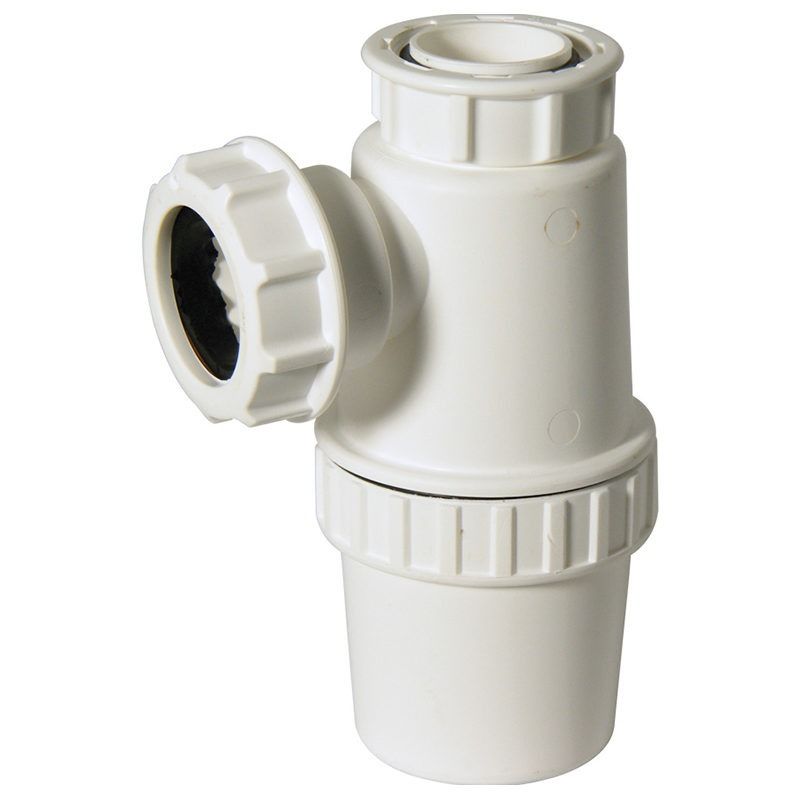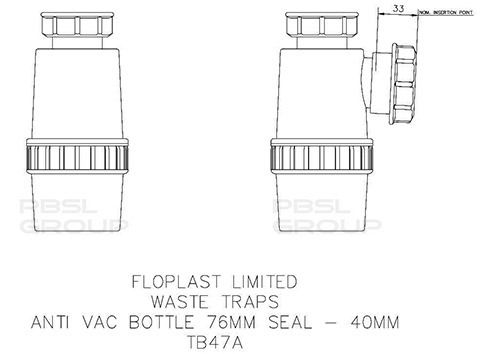FloPlast Bottle Trap Anti-Syphon - 40mm White
| Code | TB47A |
|---|
Anti-syphon traps, or anti vac traps as they are sometimes called, are used to avoid the possibility of the trap seal being drawn away by siphonage within the waste system. Siphonage generally occurs where there is a long run of waste pipe particularly if there is a steeper than normal fall on the pipe. It can also occur when the trap is positioned very near to the connection with the soil pipe.
Our anti-syphon traps have a 76mm seal. It is available in a 32mm or 40mm size option.
This trap is manufactured by FloPlast, one of the UK’s leading suppliers of above and below ground drainage systems. It can be connected to most UK manufacturers’ push fit and solvent weld waste pipes.
To connect the trap, always start at the top with the connection to the waste fitting. If the installation is particularly tight we suggest assembling all connections loosely before finally tightening all nuts once the trap is in position.
First you should ensure that the O ring is correctly seated on its lug inside the top trap nut. Push the lug inside the waste fitting and tighten the nut by hand. Do not overtighten as this could damage the O ring. To connect the other end to the waste pipe, unscrew the nut from the trap and remove it along with the washer and the rubber seal. Place these three components over the end of the pipe – first the nut, then the washer followed by the seal. Push the pipe into the trap as far as it will go, slide the seal and washer forward into position and tighten the nut. On all traps, double check that the central joint in the body of the trap is tight.
All joints can be taken apart again if required, but always check that the rubber seal has not been damaged in any way as this will cause the joint to leak.
Click here to watch our video showing how to install a trap.








